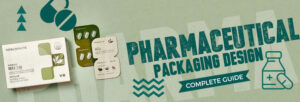Designing Pharmaceutical Labels for Maximum Readability and Safety
Designing Pharmaceutical Labels
Creating labels that are easy to read and understand helps patients take their medications correctly. These labels can also help reduce errors in the healthcare system. They can help physicians prescribe medicine more accurately, and can help pharmacists ensure that prescription bottles are refilled properly.
The design of Pharmaceutical Labels can be critical for both patient safety and product effectiveness, but it is not easy to ensure that all information is clearly displayed on labels and packages. Several factors affect the design of labels, including colour, type style, and type size and weight.

Color: Using the correct colors can help convey key information to consumers, such as a medication’s strength or its dose. For example, some products have a strong red color that reflects their higher strength.
Designing Pharmaceutical Labels for Maximum Readability and Safety
Other labels use a lighter color to highlight the lower strength of a drug. This can make it easier for patients to understand how much they should take each day and when it’s time to take the medicine.
Text: Labels should use fonts that are easy to read, and the information should be in a size that’s appropriate for adults. It’s also important to use clear spacing between lines. If the lines are too close together, it may be difficult to read.
Layout: Labels should be arranged so that all the information needed to know about a drug is visible at a glance. This includes the drug name, dosage instructions, and warnings. It should also have space for the medicine’s brand and generic names.
Graphics: Using graphics can make the information on a label more memorable and help patients to remember what the label says, especially when the drug is new or confusing. But using too many graphics can create a cluttered appearance, so it’s best to choose a few that will draw attention to important facts.
Warnings: Printed warnings should be in bold or other strong fonts to help readers see them quickly and easily. They should be at the top of the label and near the drug’s name so that they’re easy to spot.
Directions: The instructions for taking the medicine should be in a large, easy-to-read font that is similar to the drug’s brand name. This can help consumers see them quickly and remember them when they’re not looking.
Special Medications: Some medications require special labelling. For example, a medicine that contains a salt (e.g., a bromide monohydrate) will be labelled with a salt. Likewise, a medicine that is hydrated or solvated will be labelled with a hydration or solvation statement.
Labels should be able to stand up to abuse and have an attractive appearance so that they are not easily damaged. Besides, they should be easy to clean and sanitize so that the product remains safe for people to use. They should also be free of tears, wrinkles, and other signs of wear and tear. This is particularly important on labels that are likely to be exposed to the elements or to people who might try to open them.